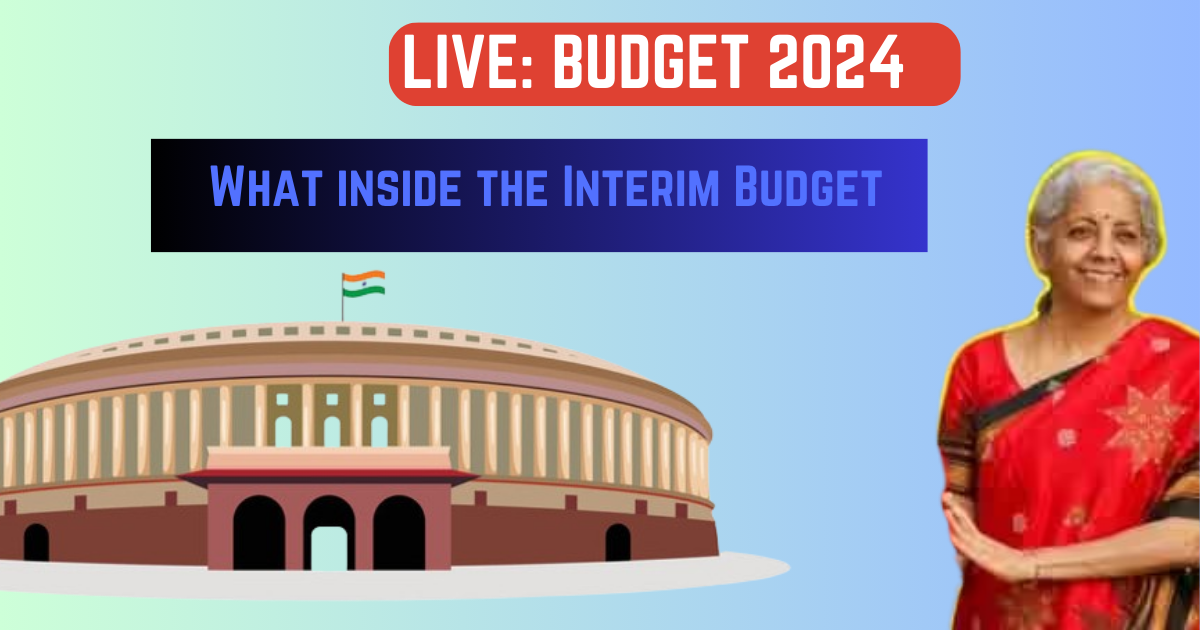Budget 2024: when, where ,how to access and key details and highlights.
Today, on February 1, Finance Minister Nirmala Sitharaman unveiled the Interim Budget 2024, marking a crucial milestone in India’s fiscal planning. This budget, though temporary, sets the stage for the country’s financial roadmap until the new government assumes office after the upcoming Lok Sabha elections. Let’s delve into some key highlights and reactions from various stakeholders regarding this interim budget announcement.

Date and Time:
The Finance Minister will present the budget at 11 am today. This will be her sixth budget presentation, including five annual budgets and one interim budget. The full budget for the fiscal year 2024-2025 will be presented in July. This is the last budget before the 2024 Lok Sabha elections.
Confidentiality Measures:
Government officials working on the budget will no longer be under strict confidentiality rules once the budget is officially released on February 1. This is to ensure the secrecy of the final document.
Accessibility:
You can access the Interim Budget 2024 through the Union Budget Mobile App. This app, available in English and Hindi for Android and iOS, provides all essential budget documents like the Annual Financial Statement, Demand for Grants, and the Finance Bill. These documents will be available promptly after the Finance Minister’s speech.
Live Telecast:
Finance Minister Nirmala Sitharaman’s budget speech will be broadcast live on Sansad TV and Doordarshan, the official Parliament channels.
Note: The interim budget provides a glimpse into the government’s financial plans until the new administration takes charge. Keep an eye out for updates and analysis following the Finance Minister’s speech.
Key Budget Details:
The interim budget, presented amidst the backdrop of the Budget Session of Parliament, outlines the government’s expenditure plans for the first four months of the upcoming fiscal year, starting from April. Notably, this marks the sixth budget presentation by Finance Minister Sitharaman, including five annual budgets and one interim budget. The comprehensive budget for the fiscal year 2024-2025 is scheduled for presentation in July, making this the last budget announcement before the crucial Lok Sabha elections.
Accessibility and Transparency:
To enhance accessibility and transparency, the government has introduced measures to facilitate easy access to budget documents. The interim budget can be accessed in a “paperless form” through the Union Budget Mobile App, available in both English and Hindi. This initiative aims to provide citizens with essential budgetary information promptly following the conclusion of the Finance Minister’s speech.
Stakeholder Perspectives:
Startup Sector Expectations: Eklavya Gupta, Founder of Recur Club, highlighted the importance of tax breaks for the startup sector to attract investments, particularly in fintech. He emphasized the need for digital infrastructure development, rural infrastructure enhancement, cybersecurity strengthening, and a regulatory sandbox for fostering innovation.
Creative Economy Outlook: Sanjay Gupta, Vice Chancellor of the World University of Design, underscored the transformative power of design in India’s economic landscape. He proposed measures to bolster design education, establish a National Design Research Fund, and align India’s design policy with global trends to nurture a flourishing creative economy.
Political Critique: Congress MP Gaurav Gogoi expressed skepticism regarding the budget’s focus, alleging that the BJP government may prioritize policies benefiting select industrialists close to Prime Minister Modi. He voiced concerns about the perceived neglect of the poor and middle class, anticipating only superficial changes that would not significantly impact their lives.
Conclusion:
The interim budget announcement serves as a critical juncture in India’s economic trajectory, setting the tone for future fiscal policies amid political transitions and societal aspirations. While the government strives to address diverse needs and priorities, stakeholders closely scrutinize budgetary allocations and policy directions, reflecting the vibrancy of India’s democratic discourse.